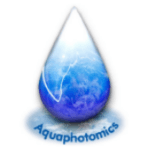
We all know how influential sound can be to us—just think about the baby crying two seats down, the neighbor learning saxophone, the live band performing on the plaza, the playlist you listen to while working out, or the screech of a fork dragging across a plate. Sounds, whether music or noise, affect us in more ways than we realize.
Scientists from the Yunosato Aquaphotomics Lab in Wakayama, Japan and the Aquaphotomics Research Department at Kobe University in Hyogo, Japan recently used aquaphotomics (a novel omics discipline studying water-light interaction) and near-infrared spectroscopy (a spectroscopic method that uses the near-infrared region of the electromagnetic spectrum) to study the effects of sound on water. They discovered the impact of sounds on water systems may run deeper than anyone thought.
Previous studies have shown that playing sounds at different frequencies can influence molecules, cells, and organisms. For example, sound can affect the growth, metabolism, and vulnerability of microbes to destruction by antibodies. It can register as a stressor for plants, triggering genetic and stress-response processes effectively enough to keep the plants alive longer than usual without water. Sound has been shown to affect food-intake neural controls in rats, and it can be used to lower the blood pressure of humans diagnosed with high-blood pressure. At the right frequency, sound can even affect our DNA. Based on the results of this study, it looks like sound can affect the “DNA” of water, too.
A core concept in aquaphotomics is that the water behaves as “collective mirror” for matter and energy. When influenced by internal or external factors, water’s molecular structure changes. Since these changes can be observed by measuring and comparing the water’s electromagnetic (EMG) spectrum before and after or during the influence, water can be used as a sensor of sorts.
In order to characterize the changes sound caused in the basic physical and chemical properties of water, scientists had Japanese pianist and composer, Acoon Hibino, play music at 432 Hz and 440 Hz, separately, on a Yamaha Motif XF8 synthesizer. They channeled Mr. Hibino’s performance through two Bose L1 compact stereo speakers focused at samples of pure water and mineral water. After several minutes, they measured the electromagnetic spectrum of the samples and isolated the absorbance bands associated with free water molecules, strongly-bonded water molecules, trapped molecules, solvation shells, and other water molecular species. They then compared the bands of the sample groups with those measured from pre-music control groups.
To compare the spectrums, the scientists created “Aquagrams”. Aquagrams are radial graphs depicting the water spectral patterns of interest at specific bands of the spectrum. According to observed changes in the aquagrams, temperature, salinity, and conductivity, it was concluded that sound stimulated changes in hydrogen bonding that stabilized the samples against environmental influences. More specifically, the 432 Hz frequency promoted crystallization, and the 440 Hz frequency had a weaker and opposite effect enhancing the evaporation and solubility.
Since the frequencies used affected the two types of water samples in consistently different ways, scientists believe the effect of sound on water is frequency- and water- dependent. If it is, there is potential for scientists to use sound and spectroscopy to differentiate between samples and to apply this principle differently to different water-systems. This study shows that sound can be used to re-organize the bonds in water-based systems.
For practical applications, these findings are substantial, because there are countless water-based systems in our world. In the medical field alone, the potential for treatment innovation is enormous. Our bodies are a combination of multiple types of water-based systems, and since restructuring or affecting those systems can be used to treat many ailments and illnesses, the results of this study give promising evidence that sound-based therapies can be used in new ways as medical treatments. Since music-based interventions are extremely non-invasive and inexpensive, the breadth of potential for the application of sound-based therapies is as incredible as it is invaluable.
Read more: Pilot Aquaphotomic Study of the Effects of Audible Sound on Water Molecular Structure

Very good post. I certainly appreciate this website. Keep writing!